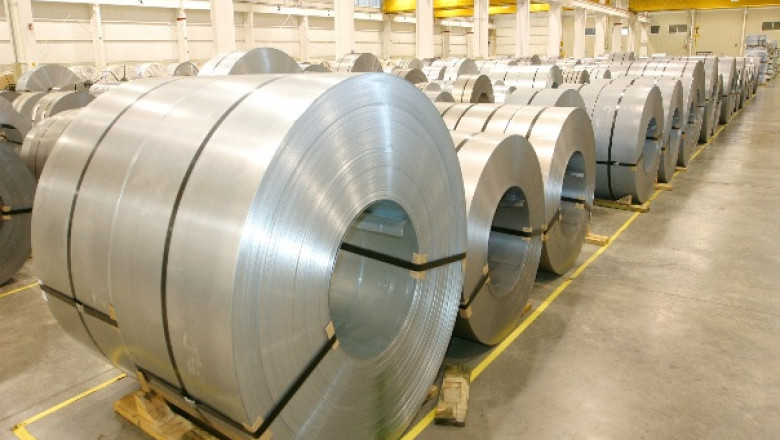views
Introduction
As the global push toward reducing greenhouse gas emissions intensifies, industries are seeking innovative solutions to meet regulatory standards without compromising performance. In this dynamic landscape, the Third Generation Advanced High Strength Steel Market is gaining momentum, especially in the automotive sector. Emission regulations, both national and international, are key drivers accelerating the demand for these high-performance materials. Third-generation advanced high-strength steels (AHSS) offer the optimal blend of strength, ductility, and lightweight properties, positioning them as a strategic solution for emissions compliance.
Emission Regulations: A Global Mandate
Governments and regulatory bodies worldwide are implementing increasingly strict emission standards. The transportation sector, which contributes significantly to global CO₂ emissions, is under intense scrutiny. Key regulations influencing the market include:
-
Corporate Average Fuel Economy (CAFE) Standards in the United States
-
Euro 7 Emission Norms in Europe
-
BS-VI Regulations in India
-
China VI Standards in Asia
All of these policies aim to lower permissible carbon dioxide and nitrogen oxide emissions, pushing automakers to manufacture lighter and more fuel-efficient vehicles.
Role of Lightweighting in Emission Reduction
Vehicle weight plays a critical role in fuel consumption. According to industry estimates, a 10% reduction in vehicle weight can lead to approximately 6–8% improvement in fuel efficiency. Consequently, reducing the overall mass of the vehicle without compromising its strength or safety has become a major priority.
This is where third-generation AHSS stands out:
-
High tensile strength allows for thinner steel components.
-
Improved ductility enables complex part shapes, minimizing the need for reinforcements.
-
Reduction in component weight directly contributes to reduced tailpipe emissions.
Why Third-Generation AHSS is Ideal
Compared to first- and second-generation AHSS, third-generation materials are engineered for emission-conscious manufacturing due to the following characteristics:
1. Superior Strength-to-Weight Ratio
Third-generation AHSS offers tensile strength exceeding 1200 MPa with enhanced formability. This allows automakers to replace heavier conventional steels without compromising structural integrity.
2. Formability and Design Flexibility
High elongation enables complex geometries in critical parts like door frames, rocker panels, and B-pillars. This optimizes weight distribution and supports safety features.
3. Compatibility with Existing Processes
Unlike costly alternatives like aluminum or carbon fiber, third-generation AHSS can be processed using conventional stamping and welding methods. This minimizes capital investment while achieving emission goals.
Automotive Industry Leads the Charge
The automotive sector is at the forefront of adopting third-generation AHSS, driven largely by emission compliance. Lightweight body structures made with AHSS contribute to fuel economy in internal combustion vehicles and extend range in electric vehicles.
Examples of implementation include:
-
Ford and General Motors have incorporated third-generation AHSS in truck frames and SUV structures.
-
Hyundai and Toyota are using it in electric vehicle designs to reduce battery load and improve crash safety.
-
European luxury brands are leveraging AHSS to comply with Euro 7 standards while maintaining performance aesthetics.
Emission Targets in Electric Vehicles (EVs)
Even though EVs are considered zero-emission at the tailpipe, their production still has a carbon footprint. Automakers are under pressure to reduce the lifecycle emissions of EVs. Third-generation AHSS contributes by:
-
Lowering the weight of the vehicle chassis and enclosures
-
Allowing for compact yet strong battery protection zones
-
Enhancing energy efficiency, thereby extending driving range per charge
Thus, even in EV manufacturing, third-generation AHSS plays a pivotal role in meeting indirect emission targets.
Complementing Sustainable Manufacturing
The Third Generation Advanced High Strength Steel Market aligns with broader goals of sustainable manufacturing. These steels:
-
Use fewer raw materials per component due to higher strength
-
Reduce energy use in downstream transportation because of lighter finished vehicles
-
Are recyclable, supporting the circular economy model
As regulatory pressure grows on industries to adopt green technologies, third-generation AHSS stands out as an effective, scalable material choice.
Regional Impact of Emission Regulations
North America
CAFE standards and EV tax credits are encouraging local production of low-emission vehicles. Third-generation AHSS adoption is growing in both passenger and commercial vehicle segments.
Europe
The shift toward electric mobility and Euro 7 norms is pushing manufacturers to integrate third-generation AHSS for lightweighting and crashworthiness.
Asia-Pacific
China, India, and Japan are investing in cleaner vehicle technologies. Local OEMs are increasingly exploring AHSS for affordable compliance with stringent emissions.
Market Forecast and Outlook
Driven by emission mandates and innovation in material science, the Third Generation Advanced High Strength Steel Market is expected to witness steady growth from 2025 to 2032. Major market trends include:
-
Increasing R&D investment in steel composition and processing
-
Strategic partnerships between steel producers and automotive OEMs
-
Integration of AHSS in next-gen EV platforms and hybrid vehicles
The market is projected to expand at a compound annual growth rate (CAGR) aligned with the global transition toward sustainable mobility and industrial efficiency.
Conclusion
The global response to climate change has reshaped industrial priorities, especially in the automotive sector. Emission regulations have become a catalyst for material innovation, and third-generation AHSS is emerging as a frontrunner. With its perfect blend of high strength, lightweighting potential, cost-effectiveness, and recyclability, it is well-positioned to support the decarbonization of transportation and manufacturing. As a result, the Third Generation Advanced High Strength Steel Market is not only responding to regulatory needs but actively shaping the future of clean, efficient mobility.






















Comments
0 comment